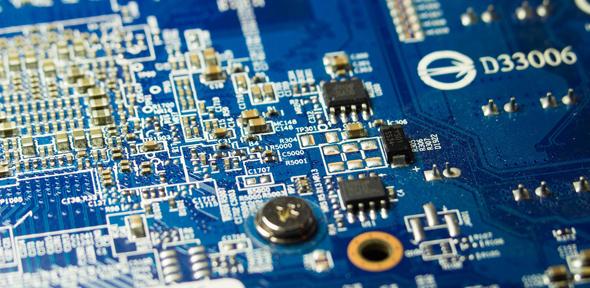A new type of transistor could bring about a bevy of innovative electronic applications, ranging from wearables to implants to IoT devices, due to the tiny amount of power it uses.

Developed by researchers at Cambridge University, the transistor could allow these devices (and more) to function for months or even years on end without a battery due to its unique ability to forage energy from its environment.
The technology operates on the same principle used to put a computer into “sleep mode” — it harnesses just a tiny amount of electrical current leakage, also referred to as “near-off-state current,” for its operations. Similar to when water drips from a faulty faucet, this leak is a characteristic of all transistors; however, this marks the first time it’s been captured and repurposed.
The transistors are produced at low temperatures and can be printed on just about all materials, including glass, plastic, polyester, and paper. They’re based on a special geometry that uses a “non-desirable” characteristic — specifically, the point of contact between the metal and semiconducting components of a transistor. It’s an area referred to as a “Schottky barrier.”
“We're challenging conventional perception of how a transistor should be,” said Professor Arokia Nathan of Cambridge's Department of Engineering, the paper's co-author. “We've found that these Schottky barriers, which most engineers try to avoid, actually have the ideal characteristics for the type of ultra low-power applications we're looking at, such as wearable or implantable electronics for health monitoring.”
One of the issues with current power transistors is size — that is, being able to produce them at small sizes. That’s because as transistors get smaller, their two electrodes start to influence one another, whereupon the voltages spread. So, at a certain size, transistors will fail to function as desired.
The Cambridge team got around this issue by using the Schottky barriers to keep the electrodes independent from one another. It was also discovered that this new design allowed the transistors to achieve a high level of signal amplification. That’s because the transistor’s operating voltage is less than a volt, with power consumption below a billionth of a watt. It’s a quality that makes these transistors most suitable for applications in which the actual function is more important than the speed of the device.
“If we were to draw energy from a typical AA battery based on this design, it would last for a billion years,” said Dr Sungsik Lee, the paper's first author, also from the Department of Engineering. “Using the Schottky barrier allows us to keep the electrodes from interfering with each other in order to amplify the amplitude of the signal even at the state where the transistor is almost switched off.”
“This will bring about a new design model for ultra low-power sensor interfaces and analogue signal processing in wearable and implantable devices, all of which are critical for the Internet of Things,” said Nathan.
“This is an ingenious transistor concept,” said Professor Gehan Amaratunga, Head of the Electronics, Power and Energy Conversion Group at Cambridge's Engineering Department. “This type of ultra low-power operation is a pre-requisite for many of the new ubiquitous electronics applications, where what matters is function — in essence, 'intelligence' — without the demand for speed. In such applications, the possibility of having totally autonomous electronics now becomes a possibility. The system can rely on harvesting background energy from the environment for very long-term operation, which is akin to organisms such as bacteria in biology.”
To learn more, read the team’s study, entitled “Subthreshold Schottky-barrier thin-film transistors with ultralow power and high intrinsic gain”, which was published in the journal Science.
Via the University of Cambridge
Advertisement
Learn more about Electronic Products Magazine





